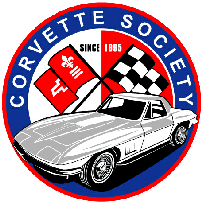The Father of Corvette Zora Duntov gives Corvette its performance genes

Zora’s passion for performance flowed from the halls of the engineering department, but his views were not always shared in the board rooms and design studios.
Many will argue that Harley Earl would hold the title of being Corvette’s paternal grantor. While it is true that Earl, as the first head of the General Motors design staff, birthed the Corvette from his studios, it goes without question that the task of raising Corvette into a world-wide performance car fell on the shoulders of a Russian immigrant who first saw Corvette, like so many other Americans, on a turntable at GM’s 1953 Motorama in New York.
Upon viewing the fledgling sportscar for the first time, the performance-driven racer inside Zora compelled him to seek work at GM. He began his tenure at Chevrolet’s R&D studios under Maurice Olley, where he began the arduous task of working within General Motors’ corporate structure to bring about enhancements to the first-generation Corvette’s early handling and performance.
A few months into the job, Zora penned a memo to corporate brass titled, “Thoughts pertaining to youth, hot rodders and Chevrolet”. In it, he spelled out the little car’s potential, and short-comings in comparison to Ford’s already popular flathead engine. He explained the potential market available to Chevrolet’s up-and-coming small-block and devised a marketing plan that enabled young enthusiasts to make the most of cars that would be so-equipped.
Zora’s passion for performance flowed from the halls of the engineering department, but his views were not always shared in the board rooms and design studios. Many stories echo through the halls at GM where Zora’s ambition would be met with a stern eye or watchful glares, making sure that his enthusiasm didn’t bring harm to any of GM’s interests, or himself!
Always able to think a little farther out than most, Zora wasn’t always able to bring all of his thoughts from drawing board to sales floors, but many were able to make the trek. Corvette’s first mechanical fuel injection, race-proven brakes and even a camshaft that bears his name have all forged their part in making Corvette performance a world-wide phenomenon. Other ideas like a mid-engine Corvette became mere playthings to Corvette’s first Chief Engineer and would never see the light of dealer’s showrooms, let alone the street.
While Zora, more often than not, would push Corvette for more, there were a few instances where he wanted less. Take for instance the split rear window of the 1963 Corvette. After countless arguments with Bill Mitchell and his design staff, Zora finally convinced Ed Cole that it was unnecessary and it was pulled after appearing only for one year. The separation of glass panes are as much a part of Corvette’s heritage as the contests among Zora’s engineering department and Mitchell’s design studios.
In the end, the fusion of ideas, egos and enthusiasm fostered Corvettes that carried the once under-powered, needy brain-child of Harley Earl’s sportscar into the world-class performer that still dominates the tracks and highways around the globe. Without the input and mentoring of one Russian expatriate, one can only guess if America’s favorite sportscar would ever have become so great.

